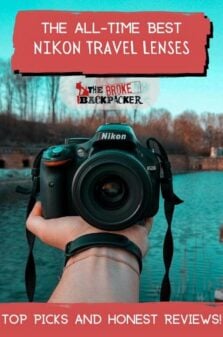Nikon is one of the oldest and most respected camera manufacturers in the world. For over 100 years, this company has been producing photographic equipment that is used and loved by all types of people.
Nikon gear is used by professional photographers, journalists, enthusiasts, and everyday-folk alike; it is thanks to their mutual love for Nikon that the company has been so successful.
Nikon is well-known for its camera sensors, which are among the most advanced camera bodies on the current market. That said, a sensor is nothing without a lens. Nikon users should be just as concerned with their travel lens selection as they are with their camera body, which is what we’re going to talk about today.
There are over 90 Nikon lenses to choose from and even more when you consider 3rd parties like Sigma, Tamron, and Rokinon. If you’re having trouble sorting through these lenses and choosing the best Nikon travel lens for yourself then we don’t blame you.
That’s why we’re here to help! We at Broke Backpacker have an extensive knowledge on Nikon’s lens library are ready to help you out with any and all of your questions.
We’ve compiled a list of the 16 best Nikon lenses for travel photography. Each lens is uniquely designed and will appeal to a certain type of photographer. Whether you’re a run-and-gunner, a Zen landscape master, or a pro at portraiture, there is a lens out there made just for you.
So let’s get to it then! Here are the best Nikon lenses for travel photography currently available!
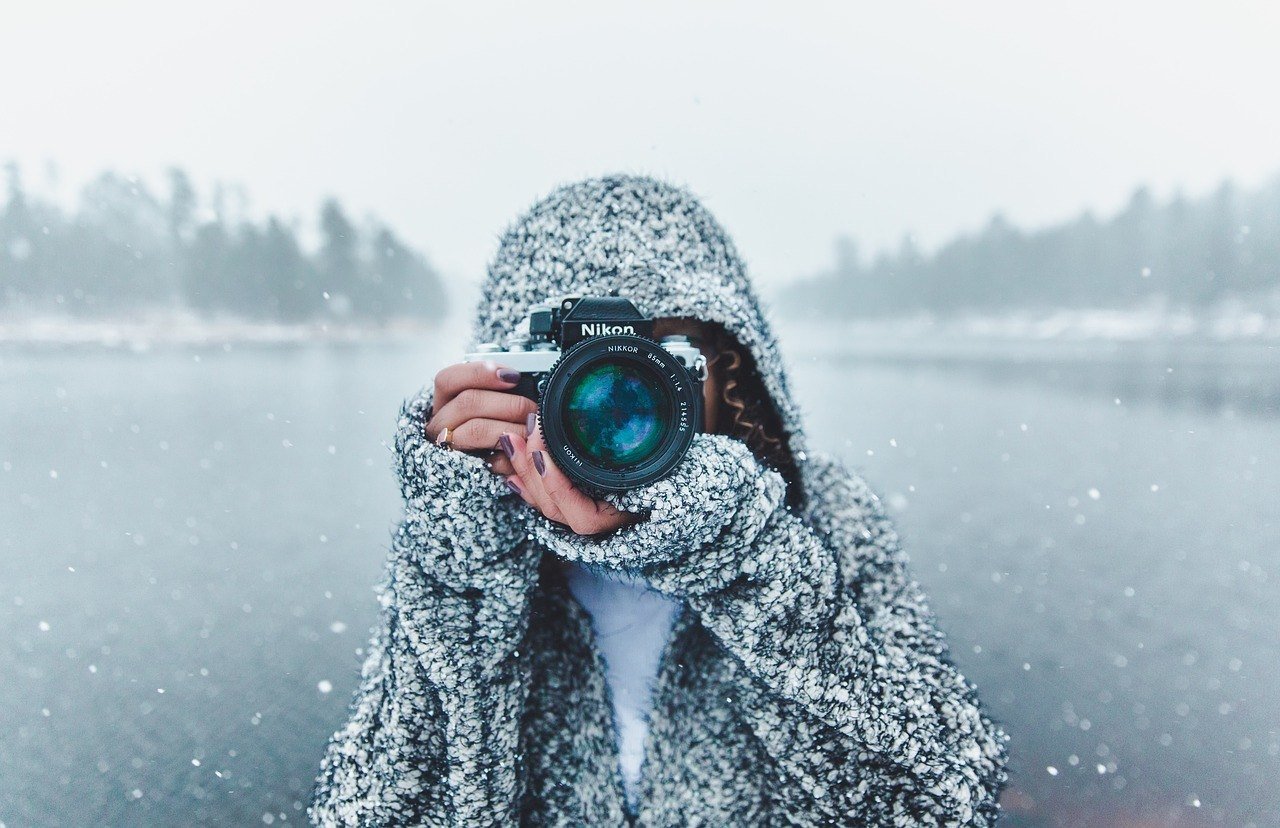
The Broke Backpacker is supported by you. Clicking through our links may earn us a small affiliate commission, and that's what allows us to keep producing free content 🙂 Learn more.
Quick Answers: Best Nikon FX Travel Lenses of 2025
- Overall Best Travel Lens for Nikon FX – Nikon AF-S FX NIKKOR 24-120mm f/4G ED VR
- Best Budget Travel Lens for Nikon FX – Nikon 24-85mm F/3.5-4.5G ED VR AF-S
- Best Professional Travel Lens for Nikon FX – Nikon AF-S FX NIKKOR 24-70mm f/2.8G
- Best Prime Travel Lens for Nikon FX – Nikon 50mm f/1.4G SIC SW
- Jump to -> The List of Best Nikon FX Travel Lenses of 2024

Nikon Nikkor 24-120mm f/4.0
- > $1096.95
- > Great focal range
- > Sharp
- > Lightweight
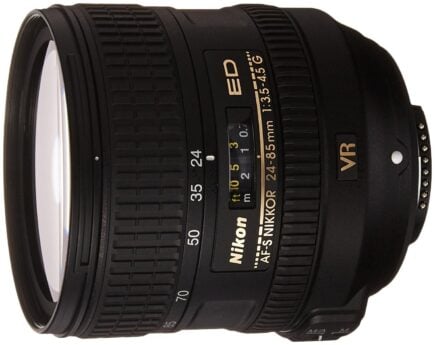
Nikon Nikkor 24-85mm f/3.5-4.5
- > $325.55
- > Good center sharpness
- > Good autofocus
- > Affordable

Nikon Nikkor 24-70mm f/2.8
- > $629
- > Outstanding sharpness
- > Very robust
- > Great autofocus

Nikon Nikkor 50mm f/1.8
- > $149.98
- > Sharp
- > Light and durable
- > Very affordable
Quick Answers: Best Nikon DX Travel Lenses of 2025
- Overall Best Travel Lens for Nikon DX – Sigma 18-300mm F3.5-6.3 DC Macro OS HSM
- Best DX Budget Travel Lens for Nikon DX – Sigma 17-50mm f/2.8 EX DC OS HSM FLD
- Best DX Professional Travel Lens for Nikon DX – Sigma Art 18-35mm f/1.8
- Best EF-S Prime Travel Lens for Nikon DX – Nikon AF-S DX NIKKOR 35mm f/1.8G
- Jump to -> The List of Best Nikon DX Travel Lenses of 2024

Sigma 18-300mm f/3.5-6.3
- > $598
- > Good optics
- > Well designed
- > Affordable
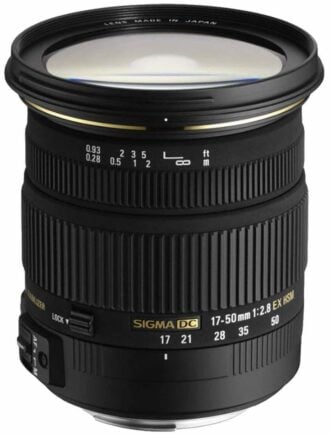
Sigma 17-50mm f/2.8
- > $699.95
- > Good center sharpness
- > Fast aperture
- > Affordable

Sigma Art 18-35mm f/1.8
- > $699
- > Unbeatable resolution
- > Unbeatable resolution Very fast aperture
- > Limited optical imperfections
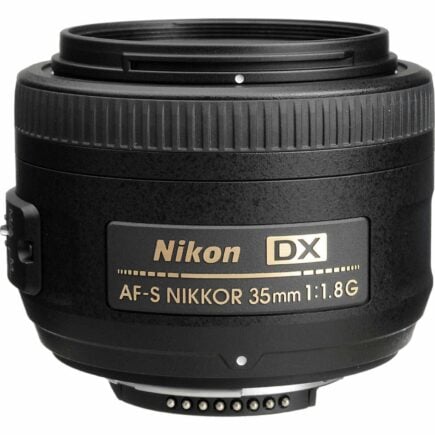
Nikon Nikkor 35mm f/1.8
- > $117.8
- > Great performance
- > Amazing price
- > Very portable
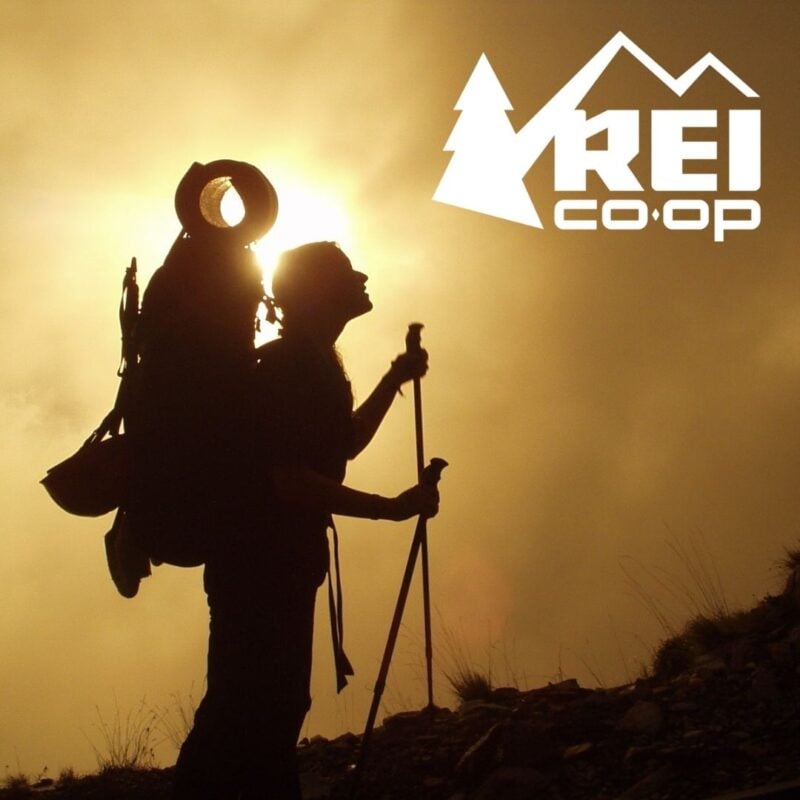
REI is one of America’s biggest and most-loved outdoor gear retailers.
Now, for just $30, get a lifetime membership that entitles you to 10% OFF on most items, access to their trade-in scheme and discount rentals.
Join REI Today!Overall Best Nikon Travel Lens (FX): Nikon AF-S FX NIKKOR 24-120mm f4 G ED VR
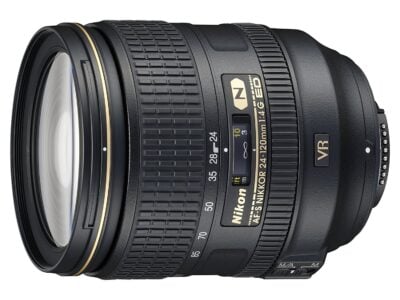
- Price: $1096.95
- Weight: 1.56 lb / 710 g
- Dimensions: 3.31 x 4.06″ / 84 x 103 mm
- Filter Size: 77mm
- Optical Stabilization: Yes
The Nikkor 24-120mm f/4 ED VR is our pick for the best Nikon travel lens! This iteration of the classic “do-everything travel zoom” is a worthy piece of equipment, thanks in part to its solid optical performance, effective vibration reduction, and relative lightweight.
Those who are traveling the world and need something both powerful and portable will find the 24-120mm is one of the best options.
The Nikon Nikkor 24-120mm f/4G ED VR appealing because of its useful focal range. At 24-120mm, this lens can capture all sorts of subjects and will appeal to many types of photographers.
Landscape photographers will appreciate the relatively wide 24mm angle while portrait photographers will get some pretty solid headshots at the telephoto end.
Optically, the Nikon Nikkor 24-120mm f/4 performs very well. Images are super sharp, particularly in the center, from the widest aperture. The corners are bit soft but improve dramatically when the lens is stopped down.
Vignetting and distortion are visible at both ends of the focal range but luckily these problems can easily be fixed in post-processing. The bokeh created by the 24-120mm isn’t the best, and many photographers find it too busy or chaotic.
To be honest, the problems that the Nikon Nikkor 24-120mm f/4G ED VR suffers from are to be expected. Travel zooms like this one are usually prone to optical imperfections but, given the usefulness of the lens’ focal range, these tradeoffs are almost always acceptable.
The Nikon Nikkor 24-120mm f/4 is made of high-grade plastics. Although these plastics are pretty durable, they are not weather resistant. Those who expose their lenses to elements frequently may be concerned with the Nikon 24-120mm’s ruggedness or lack thereof.
- Excellent sharpness.
- Very useful focal range and VR.
- Relatively lightweight.
- Vignetting/distortion when shot wide or telephoto.
- Unattractive bokeh.
- Plastic construction.
Best Budget Nikon Travel Lens (FX): Nikon 24-85mm F/3.5-4.5G ED VR AF-S

- Price: $325.55
- Weight: 1.02 lb / 465 g
- Dimensions: 3.07 x 3.23″ / 78 x 82 mm
- Filter Size: 72mm
- Optical Stabilization: Yes
For those who don’t want to shell out $1,000+ for a professional zoom, the Nikon 24-85mm f/3.5-4.5G ED VR is an excellent alternative. For around $500, you can have a lens with good image quality, a solid set of features, and excellent packability. Though the Nikon 24-85mm f/3.5-4.5 is far from perfect, it still does a great job of capturing beautiful images.
Optically, the Nikon 24-85mm f/3.5-4.5G ED VR performs pretty well. Center sharpness is excellent throughout the entire focal range. The vibration reduction and autofocusing systems are very capable as well and should increase photo quality in either dimly lit or fast-paced environments.
The Nikon 24-85mm f/3.5-4.5G ED VR does suffer from quite a few optical blemishes. Distortion, both the barrelling and pincushion varieties, is noticeable throughout the focal range. Vignetting and corner softness are also strong when the lens is used wide open.
Even though it was designed to be used on the FX mount, the Nikon 24-85mm f/3.5-4.5G ED VR oddly enough feels more suited for a DX camera. Because of the sensor cropping, the corners suffer less from softness and vignetting while on a DX body.
Regardless of its inherent flaws, the Nikon 24-85mm f/3.5-4.5G ED VR is still an effective lens that is capable of delivering excellent photos. It will require a little extra effort to get the most out of this camera but, once you master it, the Nikon 24-85mm f/3.5-4.5G ED VR can be one of the best budget travel lenses for Nikon FX users.
- Good center sharpness throughout the focal range.
- Quick, silent autofocus.
- Affordable.
- Distortion throughout the range.
- Heavy vignetting.
- Optical blemishes more apparent on FX mount.
Best Professional Nikon Travel Lens (FX): Nikon AF-S FX NIKKOR 24-70mm f/2.8G

- Price: $629
- Weight: 1.98 lb / 900 g
- Dimensions: 3.27 x 5.24″ / 83 x 133 mm
- Filter Size: 77mm
- Optical Stabilization: No
For those looking for a superlative lens and are willing to fork out the necessary dough, the Nikon AF-S FX Nikkor 24-70mm f/2.8G is one of the best that money can buy.
Thanks to its stellar image sharpness, blazing fast autofocus, and superb build quality, the Nikon AF-S FX Nikkor 24-70mm f/2.8G is our choice for the best travel lens for professional Nikon photographers.
The Nikon AF-S FX Nikkor 24-70mm f/2.8G is a worthy addition to the photographic world. Like most other fixed-aperture zooms, the Nikon AF-S FX Nikkor 24-70mm f/2.8G is near-flawless optically.
More than that, it just performs amazingly well – autofocus is some of the fastest in the Nikon line, and construction is of such high quality the lens can handle most forms of weather.
All and all, the Nikon AF-S FX Nikkor 24-70mm f/2.8G strives to be a perfect lens and, for the most part, comes close. As is the case with pro medium zooms though, the question is “what doesn’t this lens have?”
Like a lot of Nikon lenses, distortion and vignetting are present in the Nikon AF-S FX Nikkor 24-70mm f/2.8G, but to a much lesser degree. Many photographers will not notice these imperfections. Those that do can easily fix them with post-processing software as always.
The Nikon AF-S FX Nikkor 24-70mm f/2.8G also lacks vibration reduction tech, perhaps to keep costs and/or size down to a minimum. The fast f/2.8 aperture should do well enough in low light. For those that really want the VR though, there’s a newer, more expensive model that comes equipped with it.
- Outstanding sharpness.
- Extremely quick autofocus.
- Very robust build-quality.
- Some corner softness and vignetting.
- Expensive.
- No vibration reduction tech.
Best Prime Nikon Travel Lens (FX): Nikon 50mm f/1.8G
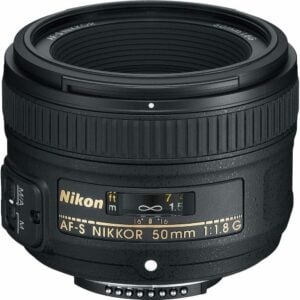
- Price: $149.98
- Weight: 6.53 oz / 185 g
- Dimensions: 2.84 x 2.06″ / 72.1 x 52.4 mm
- Filter Size: 58mm
- Optical Stabilization: No
Almost every photographer’s first prime lens is a 50mm, or “nifty fifty.” These lenses are popular first choices because they’re almost always a) useful b) effective and c) affordable. Nikon’s own 50mm f/1.8 is no exception to this trend!
The Nikon 50mm f/1.8G is everything that you’d expect from a nifty fifty – it’s sharp, portable, very fast, and, best of all, a screaming deal.
Optically, the Nikon 50mm f/1.8G is a solid performer. Sharpness is respectable when shot wide open and becomes impressive when stopped down to f/2.8 and f/4.
Vignetting and corner sharpness are present in the Nikon 50mm f/1.8G when it’s shot wide open. Most will hardly recognize these faults since the background will probably be thrown out anyways and lost in the lens’ bokeh, which is gorgeous by the way. Distortion is a bit heavy for a prime lens but this can easily be fixed in post-processing.
It goes without saying that the Nikon 50mm f/1.8G is very portable, weighing only a paltry 185 grams. The lens doesn’t have the best depth of field markings, which may or may not turn off traditional photographers who like to know their hyperfocal values.
At the end of the day, what makes the Nikon 50mm f/1.8G so great is its unbeatable price. For around $200 new, you can have an extremely useful lens that sacrifices little in the way of performance.
Those looking for the best prime lens for Nikon then should look no further than the Nikon 50mm f/1.8G.
- Excellent sharpness.
- Light yet durable.
- Amazing price.
- Distortion.
- Vignetting/corner softness at widest aperture.
- Poor DOF markings.
Best Nikon Travel Lens for Landscape Photographers (FX): Nikon AF-S FX NIKKOR 16-35mm f/4G ED VR

- Price: $398
- Weight: 1.50 lb / 680 g
- Dimensions: 3.25 x 4.92″ / 82.5 x 125 mm
- Filter Size: 77mm
- Optical Stabilization: No
The Nikon Nikkor 16-35mm f/4G ED VR is an exceptional wide-angle lens. The photos that this camera produces have an awesome resolution, are generally free of optical blemishes and just drop-dead gorgeous.
For landscape photographers, the Nikkor 16-35mm f/4G ED VR is one of the best Nikon travel lenses that they can own.
There’s little to begrudge of the Nikon Nikkor 16-35mm f/4G ED VR in terms of image quality. From f/4.0, center sharpness is superb and by f/8.0 the entire frame is crisper than a fresh set of bed sheets. Corners do show a bit of softness when the lens is used wide-open but this is to be expected from an ultra wide angle.
Distortion is very apparent when the lens is set to 16mm. This distortion is nothing debilitating – modern post-processing software can fix this imperfection – but it just really stands out within the focal range.
Luckily, all other forms of optical blemishing are well controlled in the Nikon Nikkor 16-35mm f/4G ED VR. Chromatic aberrations are nearly absent and vignetting is limited throughout the focal range.
The Nikon Nikkor 16-35mm f/4G ED VR comes equipped with vibration reduction technology, which is great for those using their DSLR for filmmaking. Pure landscape photographers may use this feature less frequently but it doesn’t hurt to have.
- Impressive sharpness.
- Well controlled vignetting and chromatic aberrations.
- VR tech for filmmaking.
- Corners are a bit soft at wide apertures.
- Heavy distortion when shot at 16mm.
- Perhaps a bit large (but only).
Best Nikon Travel Lens for Portrait Photographers (FX): Nikon AF S NIKKOR 85mm f/1.8G
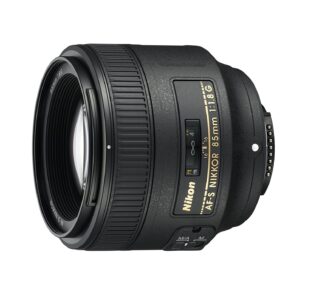
- Price: $479.95
- Weight: 12.35 oz / 350 g
- Dimensions: 3.15 x 2.87″ / 80 x 73 mm
- Filter Size: 67mm
- Optical Stabilization: No
85mm lenses are some of my favorites because, aside from their useful focal length and portable size, they almost always have near-perfect optics. The Nikon 85mm f/1.8G is such a lens.
With stellar sharpness and not too much else to complain about, the Nikon 85mm f/1.8G is one of the best Nikon travel lenses for portrait photographers.
Optically, there’s not a lot that the Nikon 85mm f/1.8G could improve on. Images are very sharp even at the widest aperture. Corners are a bit soft at the widest aperture but these will probably go unnoticed since this lens is primarily a portrait lens. When the lens is stopped down, images are tack sharp from corner to corner.
Any and all other optical blemishes are not an issue in the Nikon 85mm f/1.8G. Vignetting and distortion are practically non-existent and chromatic aberrations are very limited.
Unfortunately, the autofocus is a bit of head scratcher in the Nikon 85mm f/1.8G, at least when compared to its predecessor. The Nikon 85mm’s new autofocus system is quieter but is for some reason slower than the older model.
Even with its slightly slower autofocusing system, we still believe that this model is the best version of the lens. Most photographers will find that they don’t need the autofocus to be any faster.
Construction-wise, the Nikon 85mm f/1.8G is small and well-built. Overall, it’s a sturdy lens and should hold up quite well although its plastic construction may not appease photographers that don’t care for the material in the first place.
- Fantastic image quality.
- Fast and light.
- Great price.
- A little soft at larger apertures (but still great!).
- Autofocus is a bit slower than its predecessor.
- Plastic construction may irk some purists.
Best Nikon Travel Lens for Astrophotographers (FX): Rokinon 20mm f/1.8 AS ED UMC
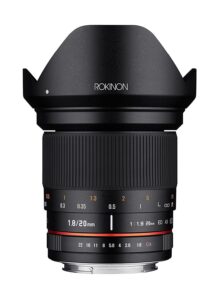
- Price: $429
- Weight: 1.09 lbs/497 g
- Dimensions: 3.27” x 3.48”
- Filter Size: 77mm
- Image Stabilization: No
Lenses produced by the Korean company Rokinon, or Samyang as it’s sometimes referred to, are very popular with astrophotographers mostly due to their excellent performance and price. The Rokinon 20mm f/1.8 AS ED UMC is one of the best lenses from this company. With an ultra-wide angle and super fast aperture, you can capture the night sky in all of its splendor and not have to break the bank in the process.
For these reasons, we think that the Rokinon 20mm f/1.8 AS ED UMC is the best Nikon travel lens for astrophotography.
Rokinon lenses are cheaper because they do not use a lot of expensive electronics that are usually included in modern day lenses. As such, most if not all of Rokinon lenses do not have autofocusing capabilities. This means that you’ll have to focus the Rokinon 20mm f/1.8 AS ED UMC manually.
Honestly, focusing manually isn’t as much of a pain as some make it out to be; it is, sometimes, preferable. The zoom ring is smooth and easy to understand, thanks to the detailed DOF markings on the side of the barrel.
Optically, the Rokinon 20mm f/1.8 AS ED UMC performs very well. Sharpness is great but CA is noticeable at wider apertures. To alleviate chroma, try stopping the lens down a tad to eliminate CA but not so much too much to cause diffraction, which sets in about f/11.
The body of the Rokinon 20mm f/1.8 AS ED UMC is built from high-grade plastics while the mount is metal; both are quite sturdy. The whole lens can feel quite bulky, though not as much as some other full frame lenses.
- Great bang for your buck.
- Limited distortion.
- Awesome aperture for an ultrawide.
- Bit bulky.
- Manual only.
- CA and vignetting present at the widest aperture.
Best Nikon Travel Lens for Telephoto Lovers (FX): Nikon 70-300mm f/4.5-5.6G ED IF AF-S VR
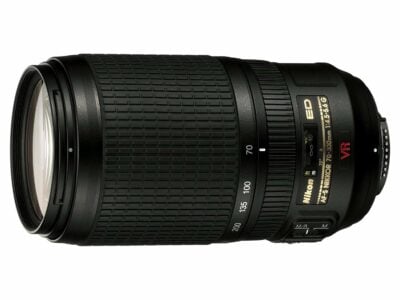
- Price: $298
- Weight: 26.3 oz / 745 g
- Dimensions: 143.5mm x 80mm / 5.6 in. x 3.1 in
- Filter Size: 67mm
- Optical Stabilization: Yes
The Nikon 70-300mm f/4.5-5.6G VR is one of the most surprising lenses on this list. For less than $500, this lens is, somehow, shockingly sharp, very lightweight, and functionally complete thanks to additions like VR and internal zooming.
In short, we love this lens and think it’s not only one of the best telephotos but hands-down one of the best lenses for Nikon.
There is a lot to like about the Nikon 70-300mm f/4.5-5.6G VR. Optically, this lens impresses, beginning sharp at its widest aperture and staying respectably sharp throughout its entire range.
The resolution does drop a bit as the lens approaches the 200mm mark but the degradation is marginal. CA also picks up as you zoom in but, as the image resolution, is relatively unobtrusive.
Since the Nikon 70-300mm f/4.5-5.6G VR has a slower aperture, it’s not very adept at shooting in low-light situations. The normally responsive autofocus tends to get lost and shutter speeds can become dangerously low. Vibration reduction tech is thankfully included in the lens, which helps a lot when the light is dim.
Construction-wise, the Nikon 70-300mm f/4.5-5.6G VR is made from high-grade plastics that are assembled very well. The lens feels robust in your hands yet still light.
What more is there to say about this lens except that it’s fantastic. Granted, it does have a few shortcomings and it obviously can’t match the resolution of the more expensive telephotos e.g. the Nikon 70-200mm f/2.8. These points being made, what the Nikon 70-300mm f/4.5-5.6G VR accomplishes for its price point is still remarkable.
- Amazing price.
- Awesome sharpness.
- Very light body that includes VR, internal zooming, and sealing.
- Struggles in low-light.
- Sharpness drops as you zoom in.
- CA present.

Do You Want to Travel FOREVER??
Pop your email in below to get a FREE copy of ‘How to Travel the World on $10 a Day!’.
Overall Best Nikon Travel Lens (DX): Sigma 18-300mm F3.5-6.3 DC Macro OS HSM

- Price: $598
- Weight: 20.6 oz / 585 g
- Dimensions: 4.0 in. x 3.1 in / 101.5mm x 79mm
- Filter Size: 72mm
- Optical Stabilization: Yes
Superzoom lenses get a bit of a bad rap sometimes. Many of them, in the process of doing so much, sacrifice a lot of optical quality.
Though every once in a while, a superzoom comes along that doesn’t give away too much, and is able to perform up to and beyond the call of duty; the Sigma 18-300mm f/3.5-6.3 DC Macro OS HSM is one such lens.
The Sigma 18-300mm f/3.5-6.3 DC Macro OS HSM is able to capture excellent photos and does a good job of covering up its inherent flaws.
The inclusion of optical stabilization helps to mitigate the lens’ limited aperture and an excellent build quality ensures both durability and portability.
Price-wise, there’s little to complain about with the Sigma 18-300mm f/3.5-6.3 as well. Given these points, we think that the Sigma 18-300mm f/3.5-6.3 DC Macro OS HSM is the best overall travel lens for Nikon DX users who want to have their cake and eat it too.
The Sigma 18-300mm f/3.5-6.3 DC Macro OS HSM offers commendable image resolutions. Sharpness is excellent at wider angles but does drop marginally as the lens is zoomed in. This lens also produces some excellent colors and contrast but not so much a pleasing bokeh.
Chromatic aberrations in the Sigma 18-300mm f/3.5-6.3 DC Macro OS HSM are well controlled. Distortion and vignetting are predictably present, as is the case usually with superzooms, but these are never debilitating.
Most users will be shocked at and probably even sold by how light the Sigma 18-300mm f/3.5-6.3 DC Macro OS HSM is. At 585 grams, this baby is practically feather-like especially when you consider how much it does.
The body still feels solid, although the zoom ring is somewhat fiddly at times.
- Solid optical performance for a superzoom.
- Durable, lightweight construction that includes optical stabilization.
- Very affordable.
- Bokeh is unattractive.
- Focus ring is tedious.
- Does more but at a sacrifice of quality.
Best Budget Nikon Travel Lens (DX): Sigma 17-50mm f/2.8 EX DC OS HSM FLD

- Price: $699.95
- Weight: 1.24 lb / 565 g
- Dimensions: 3.3 x 3.6″ / 8.38 x 9.14 cm
- Filter Size: 77mm
- Image Stabilization: Yes
Like its 18-300mm cousin, the Sigma 17-50mm f/2.8 EX DC OS is a well-performing piece of equipment that is made unignorable by its low cost. For only $300 (!!!!), you can own a fixed aperture medium zoom lens that performs admirably.
Given this amazing deal, it’s no wonder that we think the Sigma 17-50mm f/2.8 is the best budget lens for Nikon DX users.
The Sigma 17-50mm f/2.8 EX DC OS HSM performs very well. Sharpness is overall very good though the edges can be a little soft when the lens is used wide open. Vignetting is present at wider apertures as well but chromatic aberrations and distortion are both well-controlled.
Image stabilization is built into the Sigma 17-50mm f/2.8 and works as it should. Combined with fast aperture, the Sigma 17-50mm f/2.8 EX DC OS HSM is a stud in low light situations. Filmmakers will especially appreciate this setup when trying to film in dim interiors or dusky streets.
The Sigma 17-50mm f/2.8 EX DC OS HSM is an overall lightweight lens, more so than many of Nikon’s other zooms. This is due to its all-plastic construction, which is great for cutting weight but does make the lens feel a little more fragile.
The focus ring of the Sigma Sigma 17-50mm f/2.8 EX DC OS HSM feels a little more finicky than usual and can be difficult to use sometimes.
- Excellent price point.
- Great center resolution.
- Fast aperture and image stabilization
- Visible corner softness when shot wide open.
- Plastic construction.
- Tedious focus ring.
Best Professional Nikon Travel Lens (DX): Sigma 18-35mm F1.8 Art DC HSM
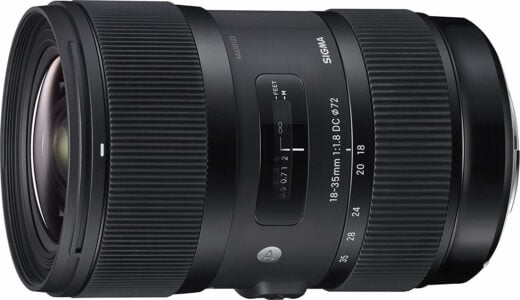
- Price: $699
- Weight: 1.78 lb / 811 g
- Dimensions: 3.07” x 4.76” / 78 x 121 mm
- Filter Size: 72mm
- Image Stabilization: No
If I were trying to convince someone to invest in a DX system over the full frame FX one, I would submit to them the Sigma Art 18-35mm f/1.8.
Simply put, this lens is one of the most gorgeous, useful, and respected lenses in all of photography. It is, without a shadow of a doubt, one of the greatest lenses made in recent years and is, deservingly, the best professional travel lens for Nikon’s DX mount.
The Sigma Art 18-35mm f/1.8 has it all – supreme image quality, a super fast aperture, robust construction, and lightning-quick autofocus. The Sigma Art 18-35mm f/1.8 is amazingly sharp, frame-wise from corner to corner and focal-wise from end to end.
Chromatic aberrations, vignetting, and distortion is present but in microscopic amounts. Optically this lens is superlative.
The Sigma Art 18-35mm f/1.8 is made from various alloys and feels very robust, perhaps tank-like. Topping out at over 800 grams, this lens is definitely on the heavier side. Many photographers enjoy the weightiness though and find that it adds a nice balance to the lens.
The focal range of the Sigma Art 18-35mm f/1.8 is pretty small and one may wonder if it can be considered a travel lens at all.
At the very least, the range of the Sigma Art 18-35mm lies in that sweet spot where many of the most useful focal lengths lie. Given the unprecedented performance of this lens as well, we think that it’s a worthy tradeoff.
- Ridiculously sharp at all times.
- Extremely fast.
- Very few optical blemishes (CA, distortion, vignetting, etc)
- Pricey.
- Big and fat.
- Pretty limited focal range for a travel lens.
Best Prime Nikon Travel Lens (DX): Nikon AF-S DX NIKKOR 35mm f/1.8G

- Price: $117.8
- Weight: 10.76 oz / 305 g
- Dimensions: 2.83 x 2.81″ / 72 x 71.5 mm
- Filter Size: 58mm
- Optical Stabilization: No
Much in the same way every full frame owner needs a “nifty fifty,” every owner of an APS-C camera should own 35mm prime lens. The best 35mm prime lens that a DX owner can buy is the Nikon AF-S DX NIKKOR 35mm f/1.8G.
With excellent optics, solid performance, and an insignificant price tag, the Nikon 35mm f/1.8 is one of the most reliable Nikon lenses available.
Like the Nikon 50mm f/1.8, the 35mm will be very useful to every kind of photographer, and may end being the most used lens in their kits.
The Nikon AF-S DX NIKKOR 35mm f/1.8G performs much in the same as the other enthusiast-level f/1.8 primes in the Nikon library – images produced by the 35mm, though not devoid of problems, are for the most part very attractive.
Sharpness is excellent even at the widest aperture and peaks at around f/2.8 and f/4.0. Distortion is present, sometimes in disconcerting levels although editing software can still fix this. Chromatic aberration and vignetting are well controlled.
True to the other f/1.8 Nikon primes, the body of the Nikon 35mm f/1.8 is very small and portable. That being said, the Nikon 35mm f/1.8 is still made primarily of plastics and is not meant to withstand extreme weather.
The key consideration when buying this lens – and the thing that will most likely convince people to do so – is the fact that it’s so cheap. For only a few hundred dollars, you get a lens that works very well and produces some really beautiful photos.
For the amount of money you’re putting up, the Nikon 35mm f/1.8 is an excellent investment.
- Great performance.
- Amazing price.
- Very portable.
- A bit more distortion than usual for a prime.
- Some CA and vignetting.
- Plastic construction.
Best Nikon Travel Lens for Landscape Photographers (DX): Nikon AF-P DX NIKKOR 10-20mm f/4.5-5.6G VR
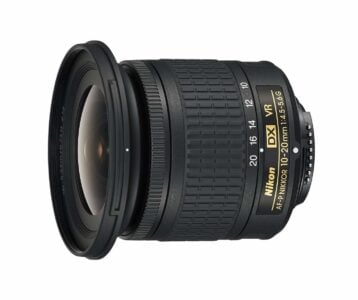
- Price: $214
- Weight: 8.11 oz / 230 g
- Dimensions: 3.03 x 2.87″ / 77 x 73 mm
- Filter Size: 72mm
- Optical Stabilization: Yes
For the price you pay, the AF-P DX NIKKOR 10-20mm f/4.5-5.6G VR is a total diamond in the rough and certainly one of the best lenses for Nikon shooters who like wide angles!
Though somewhat unimpressive on paper, the Nikon 10-20mm f/4.5-5.6 offers excellent image quality, packability, and even vibration reduction, which is a bit of treat considering this lens is than $300!
Resolution-wise, the Nikon 10-20mm does pretty well. Center sharpness is great throughout the zoom range while the corners catch up once the lens is stopped down. 15mm appears to be the sweet spot as well as 10mm and 20mm are both admirably sharp as opposed to being excellently sharp.
Vignetting and distortion are all present in the Nikon 10-20mm f/4.5-5.6G but no more than what should be expected from a wide angle zoom. Chromatic aberrations are the most obvious optical blemish with this lens and will have to be addressed in post-processing.
The vibration reduction and autofocusing systems in the Nikon 10-20mm f/4.5-5.6 both perform very well. The autofocus is quick, accurate, and virtually silent. The VR does a great job making up for the Nikon 10-20mm f/4.5-5.6G’s less than inspiring aperture, and promises up to 3.5 stops of compensation.
Aside from the price, one of the best features of the Nikon 10-20mm f/4.5-5.6G is its size. This pint-sized lens is so small that it could fit in a pocket. For those traveling light, the ability to do this is hard to turn down.
- Great image quality.
- Very light and small.
- VR tech compensates for aperture.
- Pretty slow aperture.
- Noticeable CA that will have to be corrected.
- Plastic construction.
Best Nikon Travel Lens Portrait Photographers (DX): Nikon 50mm f/1.8G

- Price: $149.98
- Weight: 6.53 oz / 185 g
- Dimensions: 2.84 x 2.06″ / 72.1 x 52.4 mm
- Filter Size: 58mm
- Optical Stabilization: No
If you know a bit about the physics of photography, then you probably know that a full frame lens can be mounted on an APS-C camera. When a full frame lens is used a such, the focal length is effectively lengthened as well.
If this concept is foreign to you, please refer to the Sensor Size section located at the end of this guide for a brief explanation.
When the Nikon 50mm f/1.8G is mounted on a DX body, it makes for a great alternative to the classic 85mm. With a new, equivalent length of 75mm and without sacrificing any optical quality, the Nikon 50mm f/1.8G is a very capable tool and one of the best travel Nikon lenses for portrait photographers.
In terms of optics, the Nikon 50mm f/1.8G barely changes at all when mounted on a DX body. This lens is still as sharp, responsive, and useful as ever.
For a more detailed explanation of the Nikon 50mm f/1.8G’s performance, refer to our earlier review in the Best Travel Lenses for Nikon FX section.
With an extra 25mms of length comes a narrower field of view with more isolated subjects. Portrait photographers will immediately latch on to these changes and take advantage of them in their work.
Using the Nikon 50mm f/1.8G primarily as a portrait lens also limits its flaws, as the inherent corner softness and vignetting become less noticeable. All-in-all, the Nikon 50mm f/1.8G is just as impressive on a DX if not an improvement.
- Excellent sharpness.
- Light yet durable.
- Amazing price.
- Distortion.
- Vignetting/corner softness at widest aperture.
- Poor DOF markings.
Best Nikon Travel Lens for Astrophotographers (DX): Rokinon 16MAF-N 16mm f/2.0

- Price: $339
- Weight: 1.26 lb / 571 g
- Dimensions: 3.27 x 3.42″ / 83 x 86.9 mm
- Filter Size: 77mm
- Optical Stabilization: No
Rokinon delivers another winning lens! With excellent image quality, a fast aperture, and a low price tag that Rokinon 16mm f/2.0 is one of the best travel lenses for Nikon astrophotographers, so long as they don’t mind focusing manually.
Like the Rokinon 16mm f/1.8 reviewed prior, the Rokinon 16mm f/2.0 performs more than admirably. Center resolution is excellent at all apertures and by f/5.6 the entire frame is tack-sharp. CA, vignetting, and distortion are all well controlled in this lens and are only present in moderate amounts.
As is commonplace with Rokinon lenses, there are no electronic components in the 16mm f/2.0, which means that there is no autofocus. Users will have to manually focus this lens like they used to do in the good ol’ days.
Manual focus isn’t so bad. Landscape photographers will hardly miss autofocus as it’s not like their subjects are moving all that fast. Astrophotographers will not sweat the exclusion of it either as they usually just leave the lens set to infinity to capture those stars.
The Rokinon 16mm f/2.0 is made from high-grade plastics and has a solid metal mount. Those who are apprehensive of buying plastic lenses should feel good about the Rokinon 16mm f/2.0 as it feels very sturdy.
I’ve taken Rokinon lenses into some pretty hairy situations and they’ve held up just as well if not better than my weather-sealed equipment.
Ultra-wide angles lenses with fast apertures are usually very pricey. You can get the Rokinon 16mm f/2.0 for around only $300, which should be a convincing price. Granted, you don’t have autofocus but who needs it anyway?
- Sharp.
- Distortion, CA, and vignetting are well controlled.
- Inexpensive.
- Manual focus.
- Softer corners and more imperfections when used wide-open.
- Bulky.
Best Nikon Travel Lens for Telephoto Lovers (DX): Nikon 55-200mm f/4-5.6G ED IF AF-S DX VR

- Price: $199.95
- Weight: 10.58 oz / 300 g
- Dimensions: 2.78 x 3.27″ / 70.5 x 83 mm
- Filter Size: 52mm
- Optical Stabilization: Yes
Though not the sharpest telephoto lens nor the fastest one, both in terms of autofocus and aperture, the Nikon 55-200mm f/4-5.6G ED IF AF-S DX VR still manages to impress, thanks to its small size and price point.
For DX users who need something longer, this is one of the best Nikon travel lenses available.
Sharpness is pretty good in the Nikon 55-200mm f/4-5.6G – centers are crisp throughout the focal range while the corners are acceptable.
You’ll have to stop down to about f/8.0 to achieve maximum sharpness. Luckily, the VR is effective and helps to counteract the slower shutter speeds that occur when stopping down.
In terms of optical blemishes, chromatic aberrations are well-controlled, distortion is average, and vignetting is pronounced. Any and all of these can be addressed in post-processing, of course.
Unfortunately, the autofocus of the Nikon 55-200mm f/4-5.6G is a bit slow. Taking the slower aperture into account, action photographers may become frustrated with this lens. Those who shoot fast moving targets (e.g. sports or wildlife) may want to look for a different lens.
Like many of the best Nikon travel lenses on this list, the biggest selling point of the Nikon 55-200mm f/4-5.6G is the fact that it’s so small and affordable.
Travel photographers who don’t want to fork out $1,000 for a giant telephoto lens and don’t mind the slower performance should take fancy to the Nikon 55-200mm f/4-5.6G.
- Good center sharpness.
- Effective vibration reduction.
- Small and affordable.
- Slow autofocus.
- Corners are just ok.
- Not so good for action photographers.

Now, you could spend a fat chunk of $$$ on the WRONG present for someone. Wrong size hiking boots, wrong fit backpack, wrong shape sleeping bag… As any adventurer will tell you, gear is a personal choice.
So give the adventurer in your life the gift of convenience: buy them an REI Co-op gift card! REI is The Broke Backpacker’s retailer of choice for ALL things outdoors, and an REI gift card is the perfect present you can buy from them. And then you won’t have to keep the receipt. 😉
Buy on REI!Things to Consider When Buying the Best Nikon Travel Lenses
Photographers should value lenses just as much as their travel camera! Lenses are one of the most important aspects of photography because they are the ones that actually refract the light and create the image (which is then written by the camera sensor).
Sharpness, contrast, color, composition; all of these aspects are influenced greatly by the quality of your lens. As one photographer once aptly put it: “you don’t invest in cameras; you invest in good glass.”
There are several things to consider when you are looking for the best travel lenses for a Nikon camera. Aspects like size, weight, vibration reduction, and more are all vital components to the making of a great travel lens.
Below is a list of features to consider when searching for the best travel lens for your Nikon camera.
Note that I’m going to be giving a crash course on several photographic concepts here. I’ll try to explain them as best as possible; otherwise, feel free to post any question regarding photography in the comment section below.
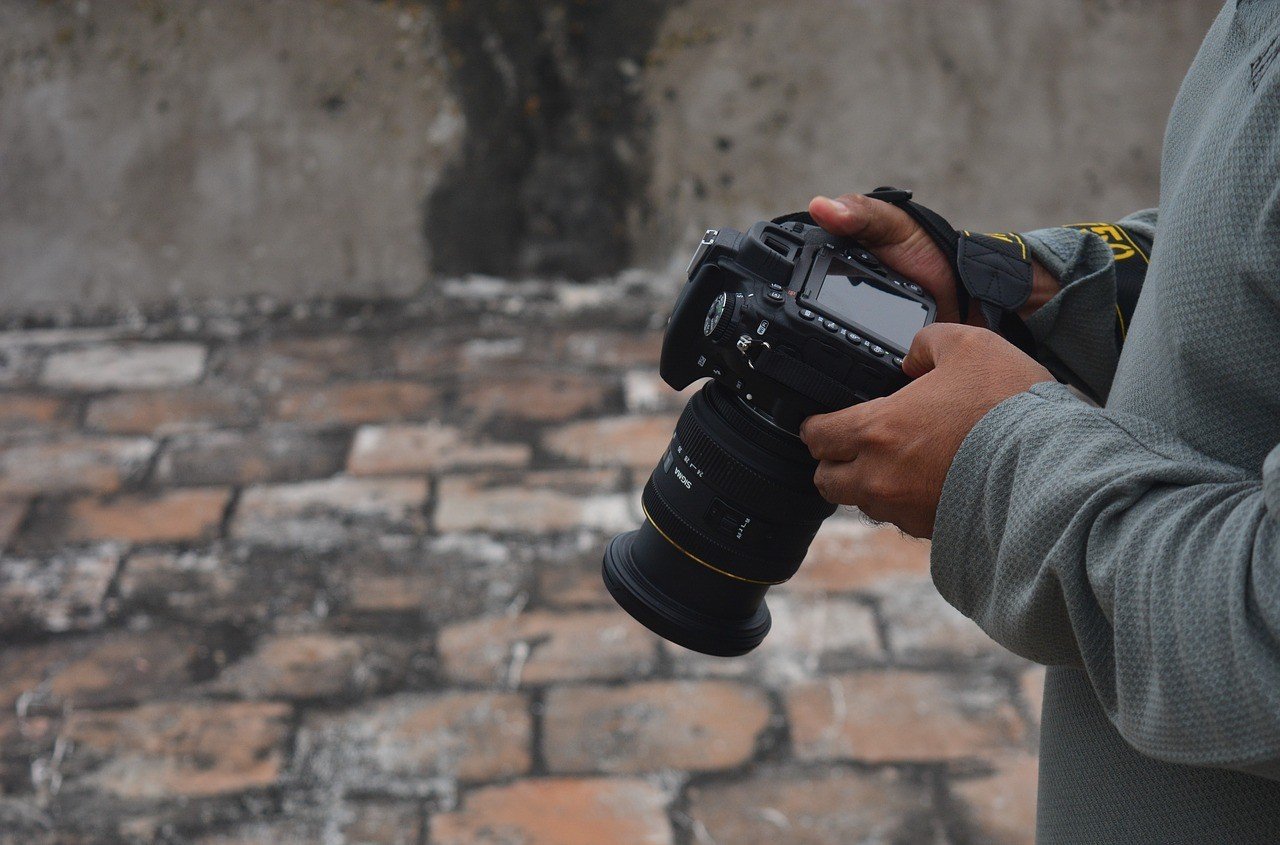
Size/Weight
Lenses vary greatly in size and shape; some are small enough to fit in your pocket, others are gargantuan pieces of equipment that require special storage. A lens’ mass and dimensions will play a large part in the size of a photographer’s bag and how they conduct themselves in the field.
Larger lenses obviously take up more space and add more weight to your pack. Sure, that lens appears small when it’s by itself but add 3 or 4 more to your pack and things quickly add up.
I have carried both ultralight and heavy camera packs and can attest that even a moderately heavy bag feels good for about a half-mile of walking.
If your camera bag has limited space and/or you like larger, higher-grade lenses, you’ll have to pick and choose your equipment wisely. Be very conscious of how much a lens weighs and how it measures. Be sure to think hard about how much you’re willing to carry.
If your camera bag is looking a bit shabby, maybe consider upgrading it as well. A good camera bag should fit your body like a glove and be able to hold all of the necessary equipment. Be sure to read our guide on the best travel camera bags for some ideas!
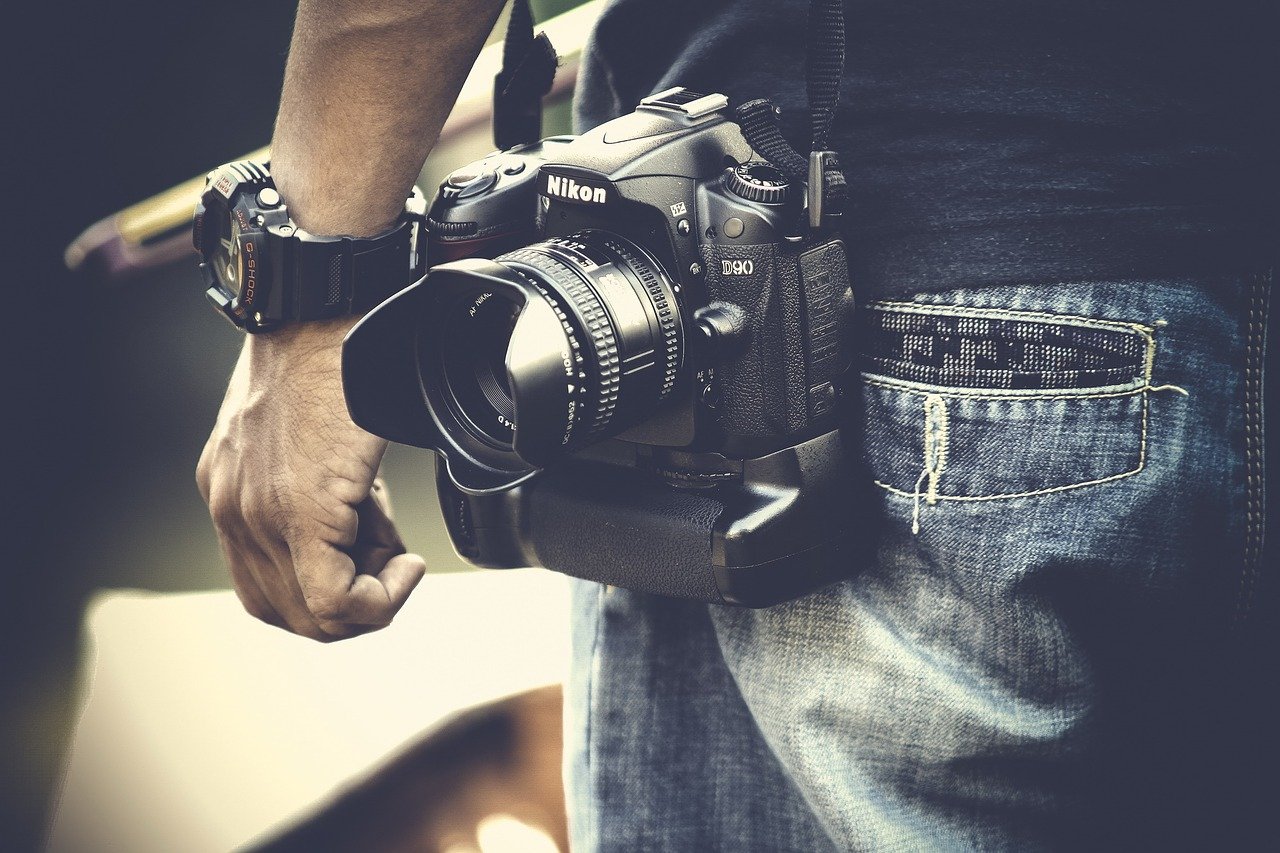
Aperture
Along with shutter speed and ISO, the aperture is a vital part of the exposure triangle, which every photographer should be well-versed in.
Though shutter speed and ISO fall within the jurisdiction of the camera, the aperture is controlled via the lens. With the proper aperture and ability to use it, photographers will have much more power when it comes to creating the photos that they want.
Fast apertures – those that have a value of around f/2.8 or less – are usually the most desirable. Though not always the case, a faster aperture is usually indicative of optical quality. Regardless, fast apertures are usually most useful during situations that call for bokeh or those that are dimly lit.
In zoom lenses, constant apertures are much more important as these definitely lead to higher quality images. The most common constant aperture ratings are f/2.8 and f/4.0. Both offer excellent quality of images.
A quick aperture is not always necessary as lots of lenses with slower apertures offer exceptional image quality.
Peak sharpness isn’t usually reached until around f/5.6 or f/8.0 anyway and shooting at extremely low apertures (e.g. f/1.4) can be more difficult than you think. Unless you really want a fast aperture, you may not need to spend the extra money.

Focal Length/Type
Without getting into the physics of focal lengths, I will simply say that certain lenses with certain focal lengths are better for capturing certain scenes. Longer lenses, renowned for their shallow depth of field and isolating qualities, are great for portraits. Wider lenses, with their expansive fields of view, are great for interior shots when space is tight or for capturing big vistas.
It is very important to think about whether or not you want a lens that covers a single focal length or many.
If you’re like many photographers then you’ll probably value optical flexibility with a lens that covers more than one focal length. Lenses that can change their field of view are called zoom lenses, and these are among the most popular types of lenses.
Some zoom lenses o have trouble with certain optical imperfections (vignetting, chromatic aberrations, etc) and with maintaining sharpness. Generally speaking, the more expensive zooms do handle these issues better.
If you’re ok with shooting at only one focal length then consider a good prime lens. Prime lenses are usually sharper, cheaper, and more durable than zooms.
What type of photographer you are will determine what kind of focal length you find most useful. You’ll often find that certain lengths are more suitable to your style of shooting, or that you favor a particular lens over another.
Do not feel handicapped by what kind of lens you own though. With a bit of creativity and skill, you can make a lens do whatever you want. Remember: a lens is only as good as the photographer that uses it.
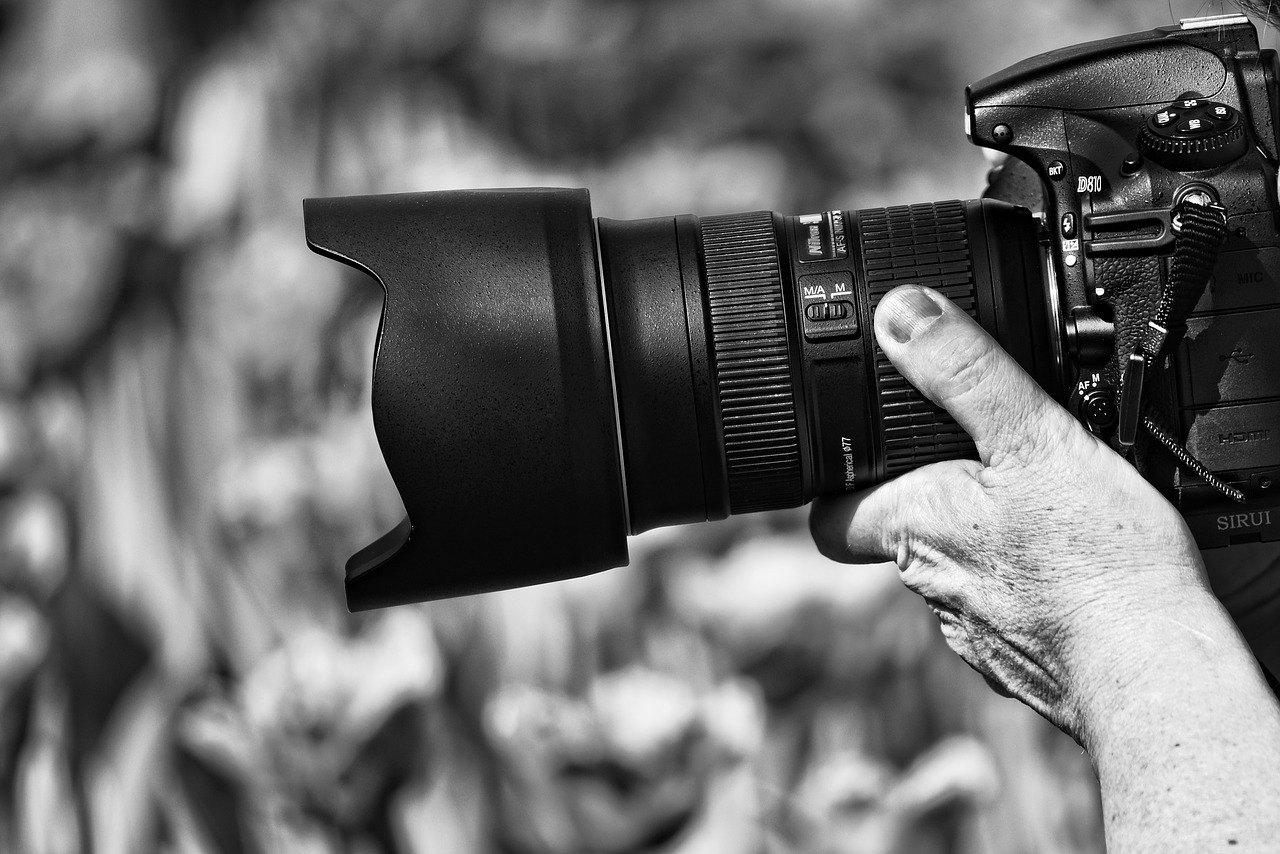
Focus
Not every autofocusing system is created equal – some are lightning-fast, utilizing state-of-the-art technology, while others are sluggish doofuses that can’t make heads or tails of a subject. How well an autofocus system behaves in a lens may or may not be a deal breaker for you.
Those who photograph fast-moving subjects – like in sports, concerts or wildlife photography – will need a lens that can keep up. In these cases, a quicker and more accurate autofocus system will be very beneficial.
These types of photographers also need to know that camera sensors play a role in autofocus as well – it’s not always just the lens doing the work.
Some photographers may not need fast autofocus or even autofocusing at all for that matter! Manual focusing lenses are still prevalent today and, aside from being markedly cheaper, can be very useful in certain situations.
Astrophotographers may actually prefer manual lenses because of their superb focus rings and because autofocus is usually useless in the pitch-black anyways.
Other photographers may even enjoy the vintage-like feel that comes with manual lenses, much like a musician might enjoy an old record.

Filter Thread
Filters are used in photography to achieve creative effects as well as provide extra protection to a camera. These filters are attached to the front of a lens along a threading that has a unique rating (e.g. 58mm. 77mm, 82mm, etc).
There really isn’t such a thing as a proper filter threading. Most filter sizes have become standardized and there is almost always a full set of filters for each threading. No matter your lens, there’s a filter that will fit it.
One big reason to consider filter sizes has to deal with costs. As you buy more lenses you may end up with multiple filter threadings and, in turn, have to invest in filters for each one. This can be frustrating, especially when you know that filters behave in the same regardless of their size. Who wants to spend more money on the same?
A good way to avoid this annoyance is to invest in step-down rings, which then be used to adapt larger filters onto smaller threadings. Simply buy a set of filters that you know will be large enough for all of your lenses and then adapt to different threadings using the step-down rings.
Or think about investing in a slot-in filter system, which uses a screw-in adapter to hold a plate-like filter. Polarizer filters are not effective with slot-in filter systems.
For more information on filters, refer to the filter section of our Best Camera Accessories guide. You’ll also read about more general tools for your travel camera.

Vibration Reduction/Optical Stabilization
Optical stabilization technology has become extremely commonplace in modern-day lenses. This tech is found in all sorts of lenses, from cheap pieces of shit to luxurious, professional-grade glass. It is, at the end of the day, a very useful feature to have in your lenses as it can allow for some very crisp images.
Optical stabilization is referred to differently by different companies (e.g. image stabilization, IBIS, etc). Nikon refers to their optical stabilization tech as vibration reduction.
Vibration reduction (VR) works by compensating for shake caused by hand holding a camera. Handshake causes blurry images, which appears as a distinct softness, and most photographers tend to dislike this.
This shakiness is often unavoidable unless you’re using a tripod. With VR, blurriness caused by shaky hands is much less noticeable and sometimes eliminated altogether.
Whether or not you need optical stabilization is something to consider when you choose from the best Nikon travel lenses. If you’re a landscape photographer who constantly has their camera mounted on a tripod, optical stabilization is pretty redundant.
On the other hand, if you shoot subjects that require you to move often or you just like to have your camera ready in your hands, then VR would be useful.

Sensor Size
Nikon makes a full frame DSLR and an APS-C DSLR. Each type of camera has its own lens library as well – Nikon’s full-frame system is referred to as FX while the APS-C one is referred to as DX.
DX lenses can only be mounted on an APS-C mount while FX lenses, though functional on an APS-C camera, work best on a full frame body.
If you mount an FX lens onto an APS-C body, then there are a few things to consider. 1) vignetting is possible; 2) certain lenses will behave differently on certain bodies; and, most importantly 3) the lens’ focal range will be lengthened i.e. a 24mm EF lens mounted onto EF-S camera will behave more like a 35mm lens.
For more on what happens when you mount a full frame lens onto an APS-C body, you can read this informative article here.
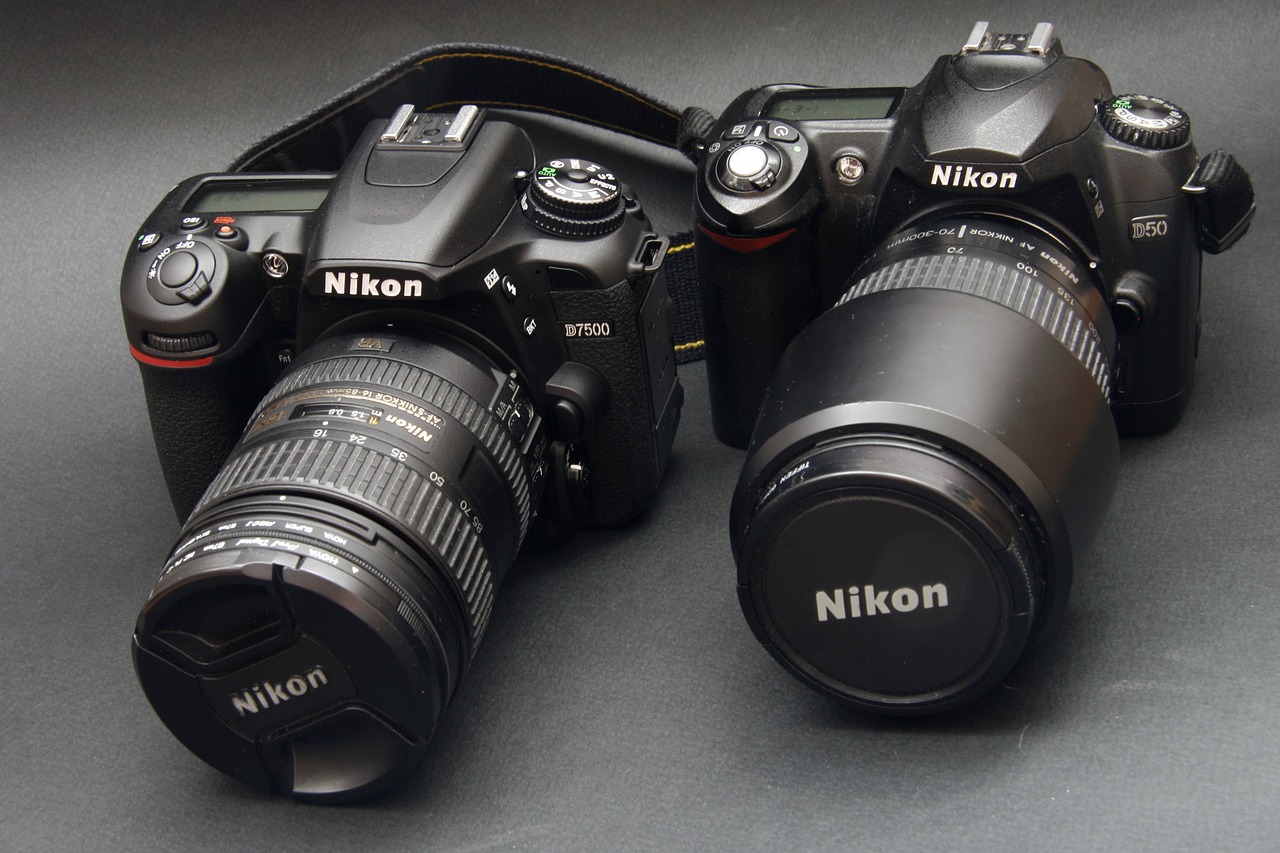
FAQ about the Best Nikon Travel Lenses
Still have some questions? No problem! We’ve listed and answered the most commonly asked questions below. Here’s what people usually want to know:

Our GREATEST Travel Secrets…
Pop your email here & get the original Broke Backpacker Bible for FREE.
Final Thoughts
There you have it folks – the 16 best travel lenses for Nikon users! Over the course of explaining these 16 lenses, we have given photographers all sorts of shooting options.
Each lens will be catered to a different type of photographer and each will have its own strengths and weaknesses. Figure out what kind of photographer you are and then choose from the best Nikon travel lens for yourself.
Know that each one will be different and dramatically affect the quality of your pictures.
Are you a traveling portrait photographer who wants some creamy bokeh? Then get the Nikon 85mm f/1.8! Do you want a DX lens that is optically flexible but affordable at the same time? Perhaps the Sigma 17-50mm f/2.8 will be right up your alley.
Think carefully about these 16 best Nikon travel lenses. The fact that you’re here reading this article means that you’re ready to take the next step into travel photography; perhaps you’re even ready to become a freelancer?!
Look sharp out there my fellow backpacking photographers and make sure your lens is just as sharp too.

Buy Us a Coffee!
A couple of you lovely readers suggested we set up a tip jar for direct support as an alternative to booking through our links. So we created one!
You can now buy The Broke Backpacker a coffee. If you like and use our content to plan your trips, it’s a much appreciated way to show appreciation 🙂




